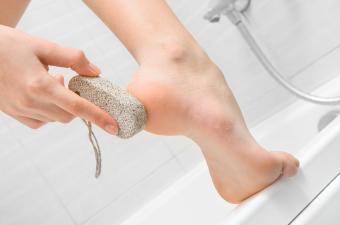
Time heals most wounds - and sunburn relief is no exception. Discover the best ways to limit the discomfort during the healing process.
Sunburn Overview
Sunburn occurs when ultraviolet rays (UV) burn the skin, resulting as UV exposure exceeds the body's natural defense by a pigment known as melanin.
Redness generally peaks between 12 to 24 hours following UV exposure and diminishes over 72 hours. Initially, pain is absent and pain level does not necessarily equate with the severity and dangers of sunburn. Minor burns can be quite discomforting and second-degree burns may hurt less, particularly after repeated exposure to sun-hardened skin.
Assess the Damage
Sunburn relief is a priority, but it is important to assess the severity of the burn first. Certain signs and symptoms call for medical assessment rather than home treatment. The National Institutes of Health (NIH) recommends immediate medical assistance if any of the following occur:
- Dizziness or feeling faint
- Rapid pulse
- Rapid breathing
- Extreme thirst, no urine output, or sunken eyes
- Pale, clammy or cool skin
- Nausea
- Fever or chills
- Skin rash
- Vision problems, light sensitivity, or pain in the eyes
- Severe, painful blisters
- Signs of skin infection
Types of Sunburn Relief
A typical mild to moderate sunburn is most painful during the first day or two and then subsides. However, the skin remains sensitive to friction for days. Itching occurs during fluid build-up, such as blisters, and as the skin regenerates. Sunburn relief is often moderate at best, and treatment works best from the inside out. The number one thing for your skin and well-being is water. Drink plenty of it to keep hydrated and promote healing.
Medications
Medications may ease pain and itching, but standard precautions, such as professional consultation and adhering to medication warnings on labels, is important. The following may offer some sunburn relief:
- Pain Relievers: Non-steroidal anti-inflammatory drugs (NSAIDs) including ibuprofen (Motrin, Advil, Nuprin), naproxen (Aleve), and aspirin relieve pain and jumpstart the healing process if taken within the first 24 hours. Pain-relieving benefits subside after the first 24-hour period has elapsed.
- Numbing Agents: Topical medication, such as Solarcaine, contains an anesthetic medication that numbs the skin. Intended for short-term use, anesthetic sunburn relief is generally temporary but can be helpful.
- Anti-Itch Ointments: Topical medications that relieve itching are also useful in sunburn relief. The active ingredients vary widely, from anesthetics to anti-histamines to drying compounds such as calamine. Low-dose (one percent) hydrocortisone cream is sometimes used, but carries some precautions. Sunburn itch may result from blistering or dryness, and over-drying may prolong the problem. If in doubt, consult with your doctor or pharmacist.
Natural and Folk Remedies
Sworn sunburn relief remedies exist among mothers and overzealous sunbathers. Limited scientific proof is available, but many individuals concur that some home remedies spell relief.
- Vinegar: Some say cider and some say white; many prefer full-strength while others mix vinegar with equal parts of cool water. The consensus, besides the pungent smell, is that vinegar removes some of the sting of sunburn. Application is via a compress with cloths soaked in the solution, or spritzed directly on affected areas. Avoid the eyes and broken areas of the skin.
- Tea: Strongly brewed and cooled tea offers relief. Compounds called tannins are thought to be responsible for the healing properties of tea. Mint teas may have superior action. Make a compress or dab on the skin.
- Aloe Vera: The gel derived from the leaves of Aloe vera has long been a treatment of choice for wounds and burns. Increasingly, scientific evidence supports its many health uses. Fresh plant extract is best, but Aloe vera loses its healing properties within four hours of exposure to oxygen. Be wary of low-quality brands containing chemicals and/or high alcohol content.
- Baking Soda: A ½ cup or more of baking soda dissolved in lukewarm bathwater makes a pleasant soak and helps the skin retain moisture. Compresses tend to be more effective for burn relief. Make a paste, put on damp cloths or paper towels, apply to the skin, rinse, and pat dry.
- Oils: Lavender and chamomile oils are increasingly popular treatments for sunburn relief. Several drops added to tepid bathwater and a 10-minute soak is a common remedy.
Additional Measures
As the burn fades, speed healing and improve comfort with these suggestions:
- Limit soap use, and use mild products on affected areas.
- Avoid extreme water temperatures.
- Wear loose clothing.
- Drink plenty of hydrating fluids.
- Keep skin moisturized.
- Use non-fragranced, warm weather-appropriate, healing skincare products.
- Avoid the sun.
More Skincare Information
WebMD offers some additional advice on sunburn relief, including blister treatment, and also provides signs of skin infection and safety tips when medicating kids. For additional home remedies, investigate Health 911.







